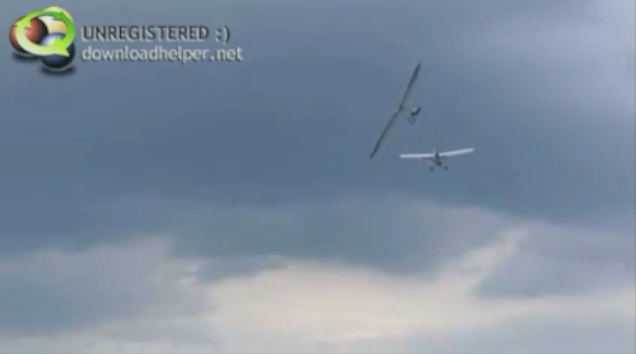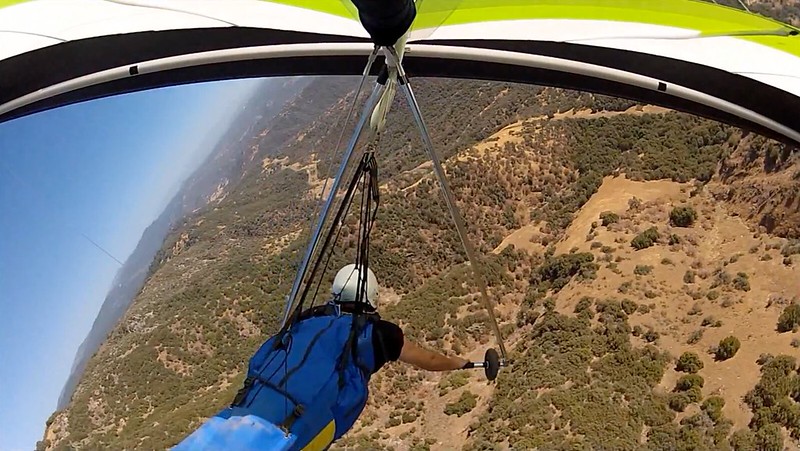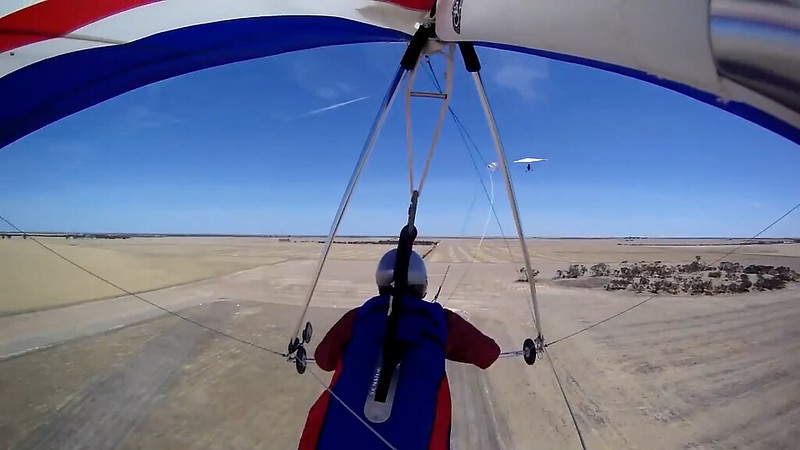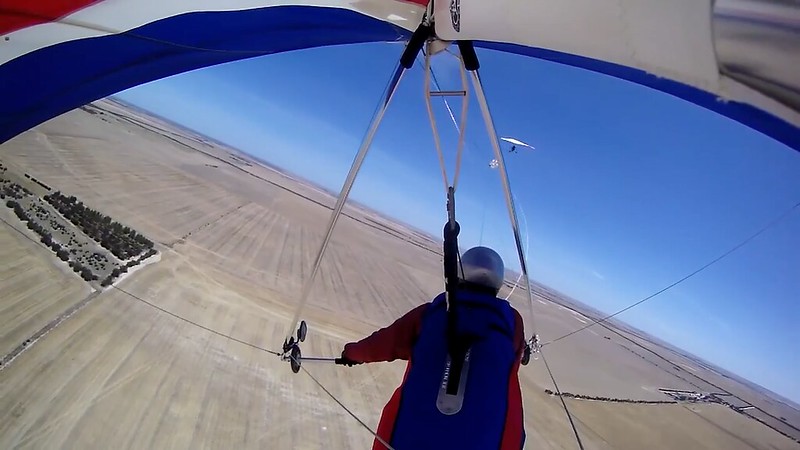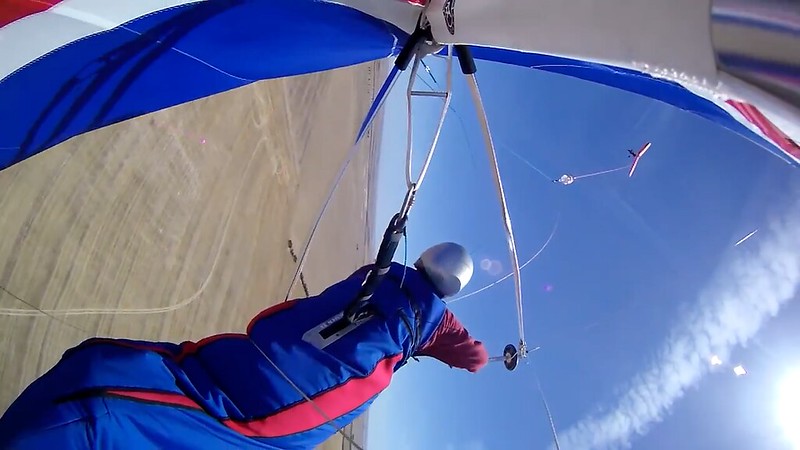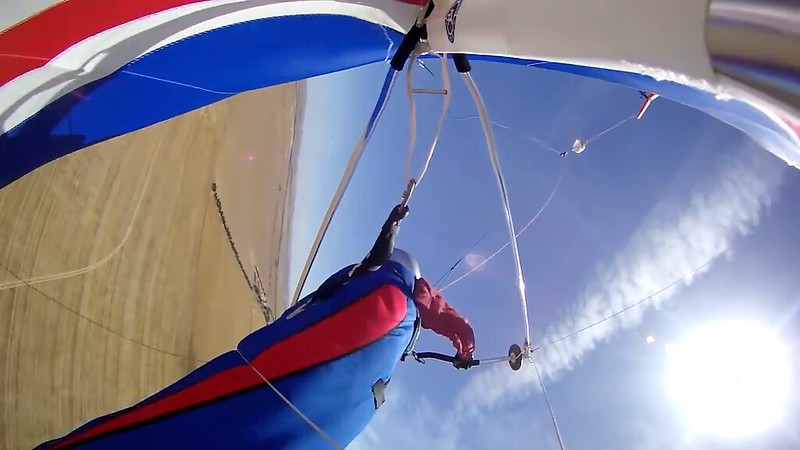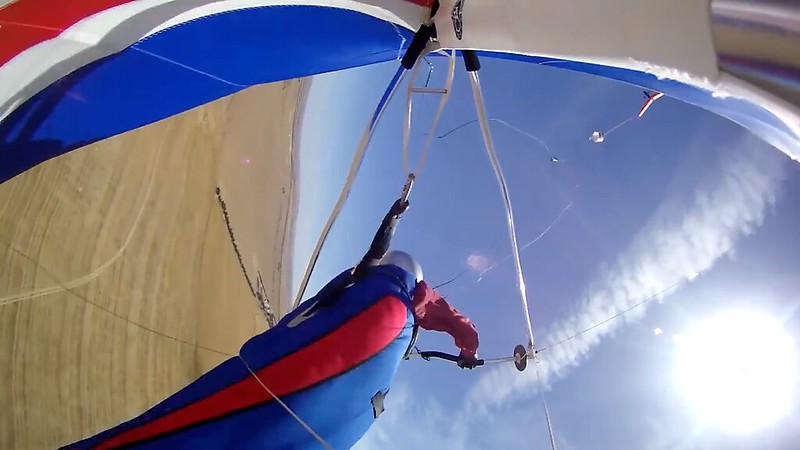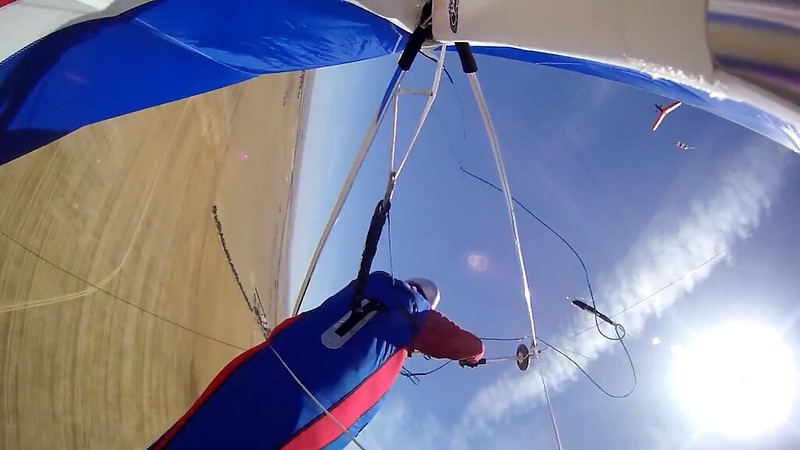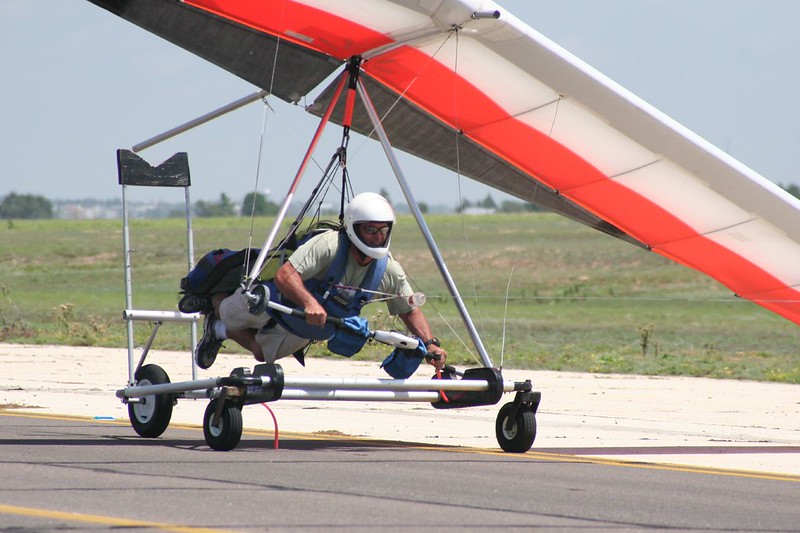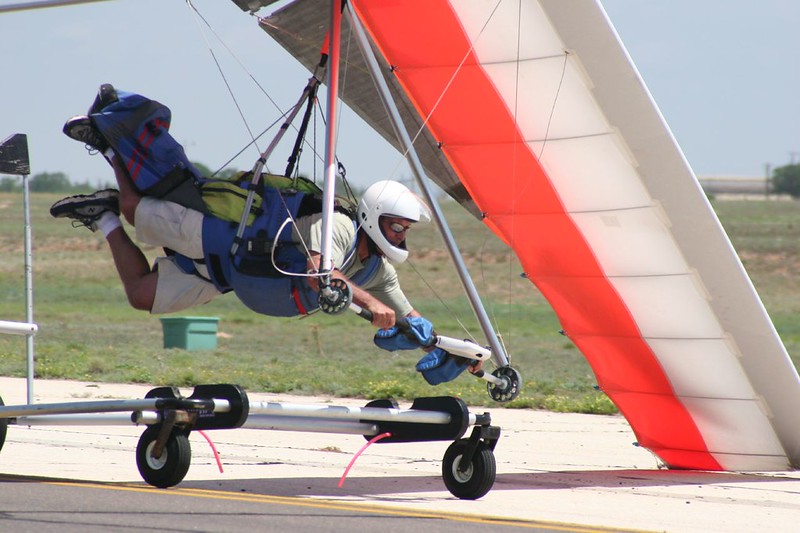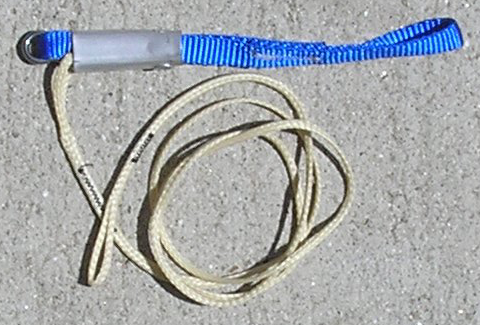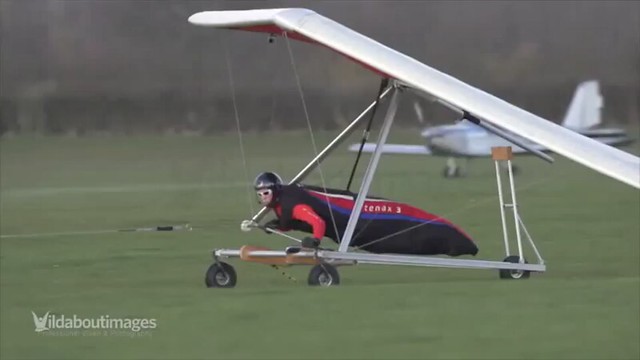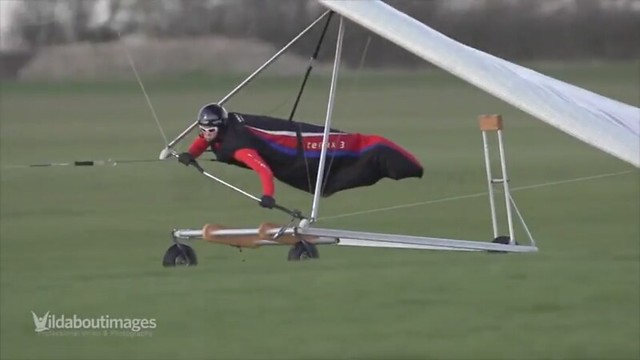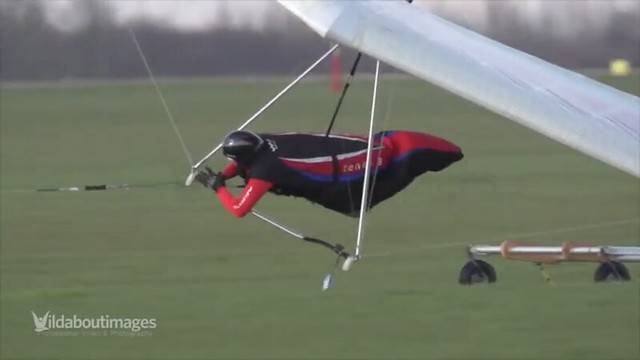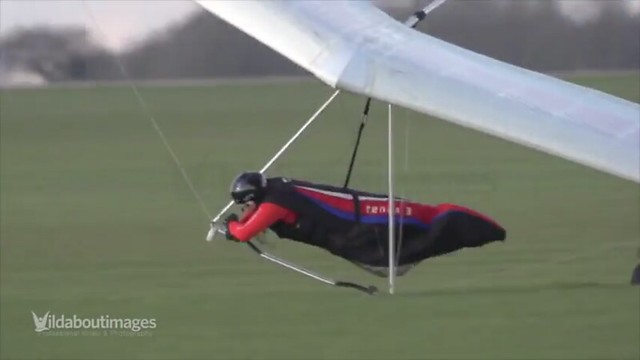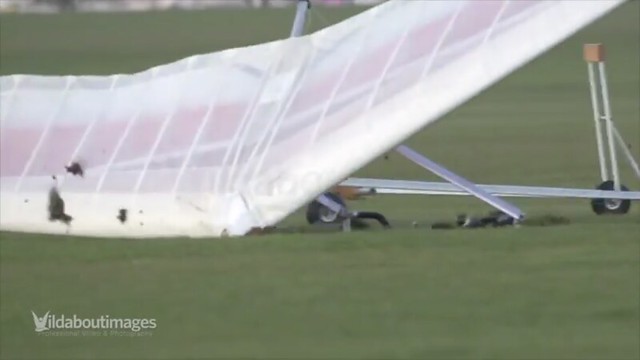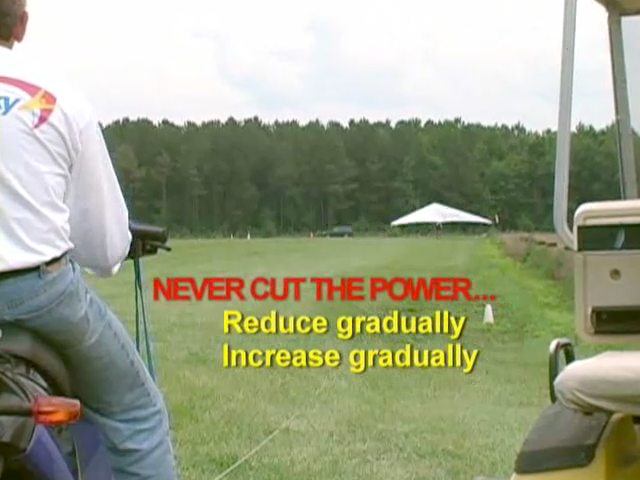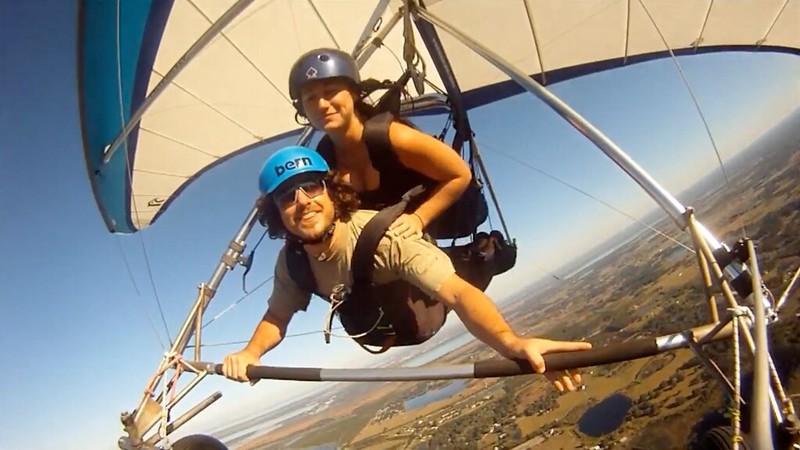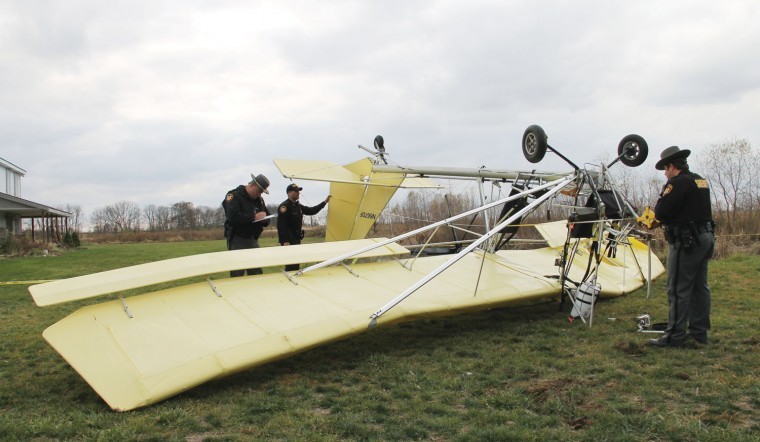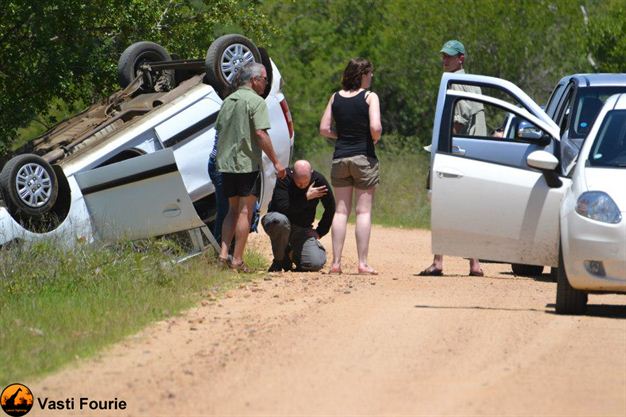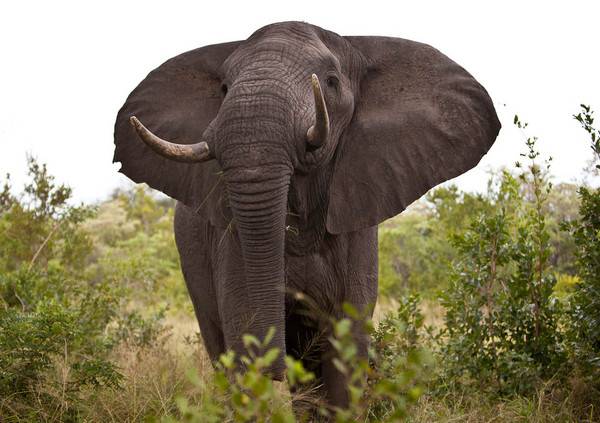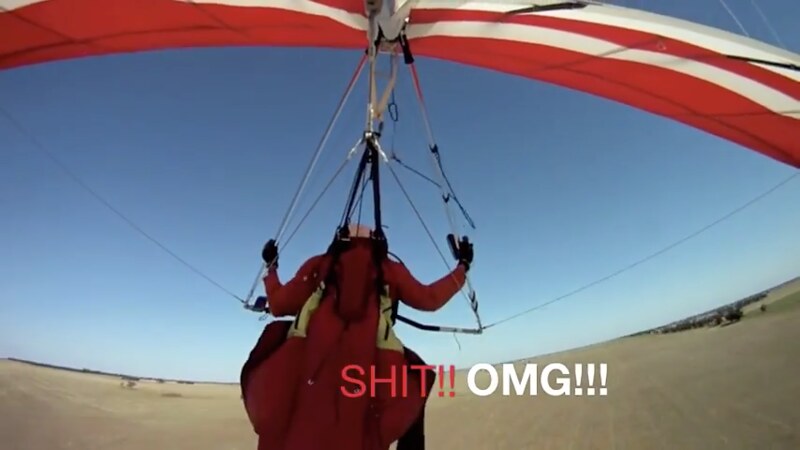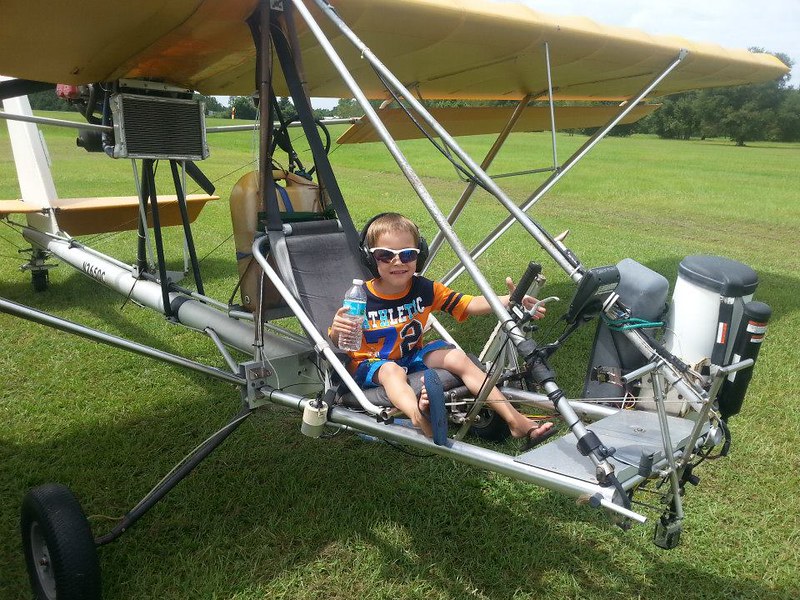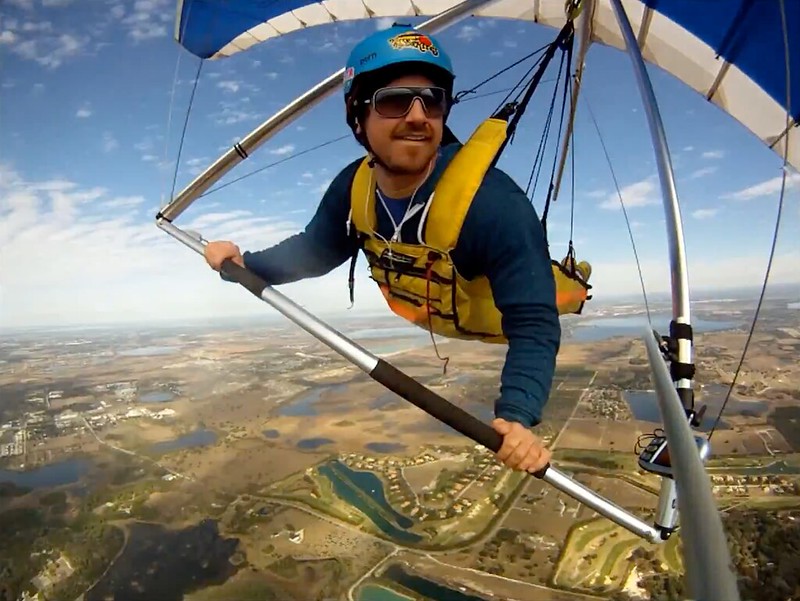http://ozreport.com/forum/viewtopic.php?t=865
Tandem pilot and passenger death
Davis Straub - 2005/10/22 21:54:49 UTC
Towing Committee - 2005/10
2- Factors that may be contributing to AT tandem accidents and possible procedure adjustments
Review of aerotowing procedures, AT accident data and discussion with top AT Tandem pilots suggests that there needs to be increased awareness of the importance of positioning under tow and the potential hazard of pushing out under tow. Situations can develop where a hang glider can stall under aerotow. Stalls that occur on tow are aggravated and result in a much greater altitude loss than previously believed. Various tandem aerotow operators have reported that they have experienced a stall while being towed and confirmed that the stall was quite abrupt and the recovery altitude was considerable. There are several possible situations that can lead to an online stall, including but not limited to: flying too far to the inside of a turn, crossing a shear at a different moment than the tug, flying into the tug propwash, inadequate tow speed (possible with a light tug and a heavy tandem). Pushing out in one of the above situations (or combination of situations) could cause the onset of a stall. Tandem pilots need to be cautioned regarding the dangers of pushing out on tow as well as the significant altitude required to recover from an on line stall.
Dave Glover has conducted an online discussion on this topic. Based on his, and this committee's findings this committee proposes the following statement to be added to tandem and aerotow study, test, and administrator/supervisor packages:
Experience in tandem hang glider flight using aero-tow launch, along with analysis of accidents and incidents that have occurred during such flight, strongly suggest that for safety reasons, the following cautions be observed.
If the tandem finds themselves too low behind the tug the tandem pilot must pull in and release rather than push out. Just because you have pushed out on tow without incident, in the past, does not mean that there is not extreme underlying danger. If the tandem glider becomes disconnected from the towline with a nose high attitude, while pushing out, a very abrupt stall (super stall) will result and MUCH more altitude than one would expect will be required for recovery (up to 1000' or more); in the most extreme cases may result in a structural failure.
Tug pilots towing tandems require extra awareness particularly early in the tow in order to help the tandem pilot avoid critical situations from developing. Prior to initiating a tow, assessment of the appropriate tow speeds based on total weight of the tandem glider, instructor and student should be made; more total weight will require increased tow speeds. A glider CAN stall on tow; towing a little faster is better than a little too slow to help prevent the glider from stalling. The tug pilot should fly the appropriate airspeed to maintain the tandem glider in the proper position and avoid pulling up abruptly leaving the tandem glider low.
Pending BoD approval this statement to given to Safety in training Committee for dissemination to AT and ATP pilots
Respectfully submitted Steve Kroop, Towing Committee
Towing Committee - 2005/10
Which consists of WHOM? Put your names on it, motherfuckers.
2- Factors that may be contributing to AT tandem accidents and possible procedure adjustments
Now start bending over backwards not to mention standard aerotow weak links and FAA and USHGA regulations and SOPs.
Review of aerotowing procedures, AT accident data and discussion with top AT Tandem pilots...
Why? You pieces of shit have never done anything like this before. Is it because this time the "family" filed a lawsuit?
...suggests that there needs to be increased awareness of the importance of positioning under tow...
And make sure you don't say anything about DELIBERATELY positioning the glider low...
Jeff Nielsen - 2005/10/14 18:32:10 UTC
That I understand, this glider was NOT low. It was SOP to tow lower using that Kolb tug. They always thought that it allowed the tug to climb better. At best, one of those involved said, "it may have been a touch low but not anything significant."
Dr. Trisa Tilletti - 2011/07
Higher EDUCATION
HOW TO GET THE USHPA AEROTOW RATING
It should be noted that the normal "sweet spot" tow position behind the high-powered tugs we fly here at Cloud 9 is lower than that for tugs with less power, due to our very high climb rate, climb angle, and deck angle. Thus, our normal tow position has the wheels of the tug above the horizon.
Commercial operations have adopted that lunacy as Standard Operating Procedure and if anybody in mainstream hang gliding is deliberately doing something it must be OK.
And now would probably be a good time to say that holding a glider straight behind a truck in a strong crosswind is OK 'cause that's how John Woiwode permanently demolished himself just two months minus four days before Arlan took himself and his student down.
...and the potential hazard of pushing out under tow.
Well, it's just a POTENTIAL hazard - not an ACTUAL hazard. You published in your magazine and Malcolm publishes on his website that it's perfectly safe - that, in fact, it's PHYSICALLY IMPOSSIBLE to STALL when you're pushed way out. That, in fact, it's actually SAFER than stuffing the bar. We know this because on 2013/02/02 Zack Marzec had a fatal whipstall, tailslide, tumble with the bar stuffed. If he'd had it pushed way out he'd have been fine. Counterintuitive but lotsa stuff in aviation is.
Situations can develop where a hang glider can stall under aerotow.
REALLY? That wasn't just my imagination when I went weightless for a second shortly after coming off the cart some years back. Thank GOD you told me this! Thought I was losing my mind!
Stalls that occur on tow are aggravated and result in a much greater altitude loss than previously believed.
By whom? Fiction writers like Dennis Pagen, Bill Bryden, Matt Taber, Malcolm Jones, Dave This-Is-What-We-Use Glover, Steve Quiet-Amusement Kroop, Steve Exceptionally-Knowledgeable Wendt, Ryan Instant-Hands-Free-Release Voight, Davis Dead-On Straub, Jim Keen-Intellect Rooney, Paul and Lauren Tjaden?
So at what point did we start believing this? How many people reported three hundred foot stalls but weren't believed because we didn't previously believe gliders would stall three hundred feet worth?
Various tandem aerotow operators have reported that they have experienced a stall while being towed and confirmed that the stall was quite abrupt and the recovery altitude was considerable.
They reported this to the Towing Committee, right? So how come the members of the Towing Committee aren't the ones with the experience having these stalls and reporting them to everyone else? Is it because getting on the Towing Committee has a lot more to do with sucking dicks than it does with experience and competence in towing?
There are several possible situations that can lead to an online stall, including but not limited to: flying too far to the inside of a turn, crossing a shear at a different moment than the tug, flying into the tug propwash, inadequate tow speed (possible with a light tug and a heavy tandem).
But CERTAINLY NOT blowing a weak link. Blowing a weak link can NEVER result in a stall because it INcreases the safety of the towing operation. In fact that's another advantage to a weak link. It's most likely to blow when you're pushed out hard, which makes it impossible to stall, and when it blows it's also impossible to stall, you get an increase in the safety of the towing operation and a bit of inconvenience. Can't stall, can't stall, and nobody ever got scratched due to inconvenience - by definition. Win/Win/Win.
Pushing out in one of the above situations (or combination of situations)...
...(not involving a weak link break, for reasons given above, or a rope break because that's really just a non designated weak link break)...
...could cause the onset of a stall.
Well, if it's just the ONSET... Big fuckin' deal. I can handle the ONSET of a stall in my sleep.
Tandem pilots need to be cautioned regarding the dangers of pushing out on tow as well as the significant altitude required to recover from an on line stall.
But you solo guys... You're cool. Just keep on doing whatever the fuck your instructor's told you will make you safer.
Dave Glover has conducted an online discussion on this topic.
WHERE? Where's he hidden it so that we can't see it? Why didn't he conduct it on The Davis Show where all the action is happening?
Based on his, and this committee's findings this committee proposes the following statement to be added to tandem and aerotow study, test, and administrator/supervisor packages:
Thank you so much for interrupting your mutual masturbation exercises long enough to provide us this invaluable service.
Experience in tandem hang glider flight using aero-tow launch, along with analysis of accidents and incidents that have occurred during such flight, strongly suggest that for safety reasons, the following cautions be observed.
Wow! That sounds REALLY BRAINY! Is there someplace I can go to see everything translated into single syllable words so I can have some chance of understanding some of it?
If the tandem finds themselves too low behind the tug the tandem pilot must pull in and release rather than push out.
Pull in THEN release? I'm pretty sure...
http://ozreport.com/forum/viewtopic.php?t=24846
Is this a joke ?
Jim Rooney - 2011/09/02 19:41:27
Your tandem incident was some guy trying to drag himself out of a low lockout instead of accepting the fact that he was too far out of position and hitting the damn release, pulling the nose in and flying away.
...you have that backwards. But that's OK - there's just so much you can get right without a really keen intellect.
Just because you have pushed out on tow without incident, in the past, does not mean that there is not extreme underlying danger.
But if you've been flying with Davis Links your whole career...
http://ozreport.com/forum/viewtopic.php?t=31052
Poll on weaklinks
Davis Straub - 2013/03/06 18:29:05 UTC
You know, after all this discussion I'm now convinced that it is a very good idea to treat the weaklink as a release, that that is exactly what we do when we have a weaklink on one side of a pro tow bridle. That is exactly what has happened to me in a number of situations and that the whole business about a weaklink only for the glider not breaking isn't really the case nor a good idea for hang gliding.
I'm happy to have a relatively weak weaklink, and have never had a serious problem with the Greenspot 130, just an inconvenience now and then.
...and have never had a serious problem with one, just an inconvenience now and then, don't worry when you see a tandem aerotow instructor fly into a thermal with one and end up splattered on the runway. You'll be fine. If there were any possibility that you wouldn't donchya think we'd be warning you about it in this advisory?
If the tandem glider becomes disconnected from the towline...
How? A tow ring failure? Maybe something falls off a passenger jet and cuts the glider's bridle?
...with a nose high attitude, while pushing out, a very abrupt stall (super stall) will result and MUCH more altitude than one would expect will be required for recovery (up to 1000' or more);
Why is this in the Jeremiah/Arlan thread? The tandem glider OBVIOUSLY...
Mike Van Kuiken - 2005/10/13 19:47:26 UTC
The weak link broke from the tow plane side. The tow line was found underneath the wreck, and attached to the glider by the weaklink. The glider basically fell on the tow line.
...DID NOT become disconnected from the towline. It stayed properly secured to the tandem glider from the moment it started rolling to and beyond the moment it stopped plummeting. Any chance we can get back on topic now?

...in the most extreme cases may result in a structural failure.
So we've been having these extreme thousand plus foot plummets and in flight structural failures on tandems and to date nobody who isn't on the Towing Committee knows about them. How very odd. Maybe you could give us some names, sites, dates, conditions, glider models, tugs, flying weights, harness configurations, parachute deployment info, descriptions of structural failures, survival rates...
Suck my dick, guys. Not ALL of us are stupid enough to swallow any and everything you feel like pulling out of your asses.
Tug pilots towing tandems...
Or anything else are virtually all TOTAL DREGS. So whatever you're about to say try to make it REAL SIMPLE and don't expect anyone to do anything he's not doing already.
...require extra awareness particularly early in the tow in order to help the tandem pilot avoid critical situations from developing.
And, again, fuck the solo guys. We're not making any money on people established in hang gliding - mostly just the thrill riders. And we're gonna get in the most trouble killing those - along with our certified ride operators who are bringing in the revenue and fairly difficult to replace.
Plus killing a certified ride operator is about a thousand times more problematic from the public relations angle than killing a Mike Haas.
- When you kill a Mike Haas it's because he was a rusty bozo who couldn't control a glider which was really too much for him at the time, flew in thermal conditions, didn't use a fin, made no attempt to release before his Davis Link had to increase the safety of the towing operation and fatally inconvenience him.
- When you kill an Arlan Birkett (and some tandem student of his) it's as a result of all these factors that were never before properly understood by the best and brightest in hang gliding and you hafta put out advisories to make sure that everyone understands that it IS possible for a tandem glider to stall on tow and there ARE occasional downsides to tandem gliders becoming disconnected from the towline.
Prior to initiating a tow, assessment of the appropriate tow speeds based on total weight of the tandem glider, instructor and student should be made; more total weight will require increased tow speeds.
Bullshit. All tugs fly faster than the gliders they're pulling like to go. If they don't have sufficient power they don't FLY slower - they CLIMB slower.
A glider CAN stall on tow;
Oh really. And people who have aerotow ratings from solo through tandem instructor and tug pilot need to be TOLD this. So what's that say about the overall competence of this sport? Hey General Aviation dudes... Make sure you've got gas in the tank BEFORE takeoff.
...towing a little faster is better than a little too slow to help prevent the glider from stalling.
No shit. More speed - less likely to stall. Less speed - more likely to stall. Never thought about that before. Thanks. Expect a little sumpin' extra in your stockings this Christmas.
The tug pilot should fly the appropriate airspeed to maintain the tandem glider in the proper position and avoid pulling up abruptly leaving the tandem glider low.
But what good does any of this do if the tandem glider becomes disconnected from the towline? How does this typically happen - 'specially in the cases which resulted in thousand foot plummets and the EXTREME cases resulting in structural failure?
Do you have any thoughts on preventing the tandem glider from becoming disconnected from the towline? Is it a problem with the bridles? Should we inspect them more carefully and replace them more often?
Pending BoD approval this statement to given to Safety in training Committee for dissemination to AT and ATP pilots
Are ya gonna proofread it a little more before this statement to given to Safety in training Committee for dissemination to AT and ATP pilots?
Respectfully submitted Steve Kroop, Towing Committee
Fuck you Steve Quiet-Amusement Kroop, Towing Committee. And save your respectful submission. Hell would freeze over before you'd be able to buy a molecule's worth of respect from Yours Truly.

